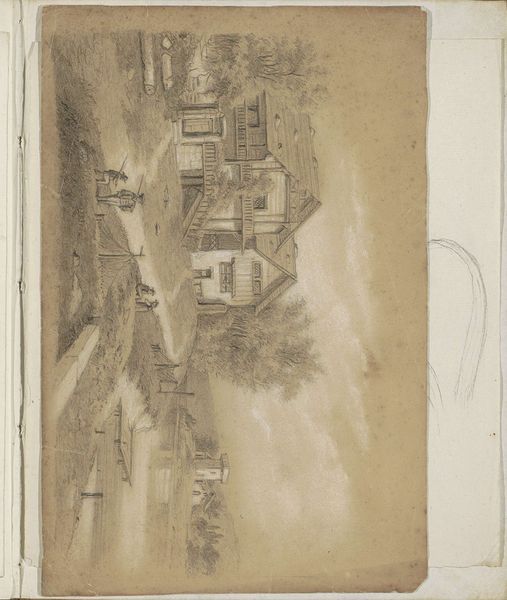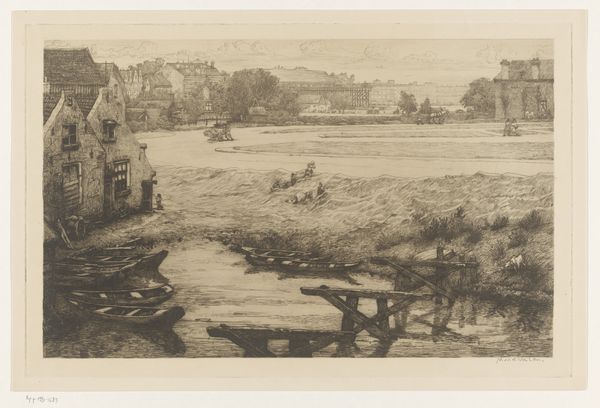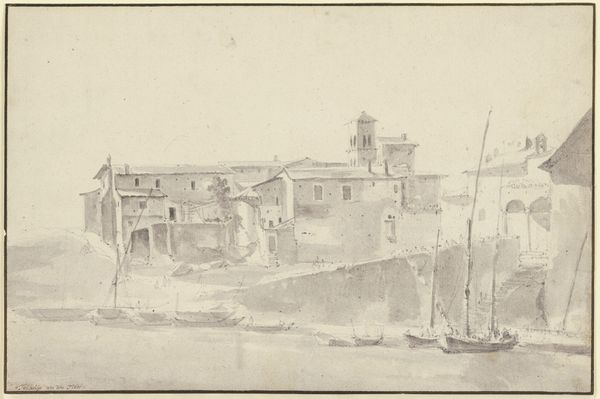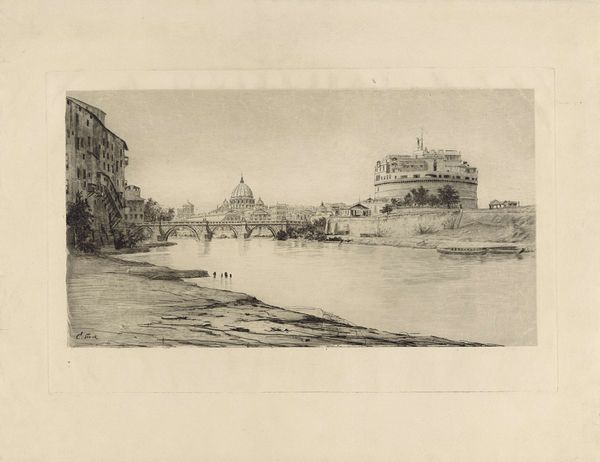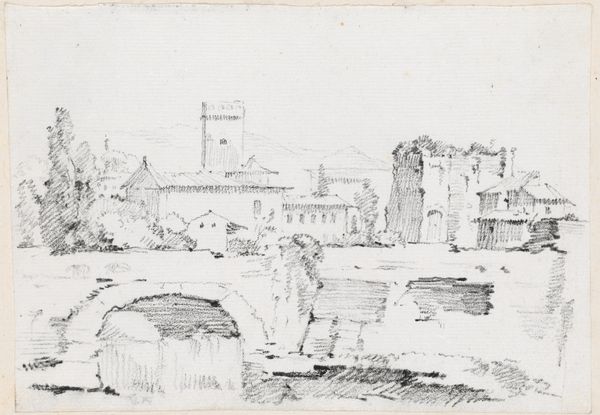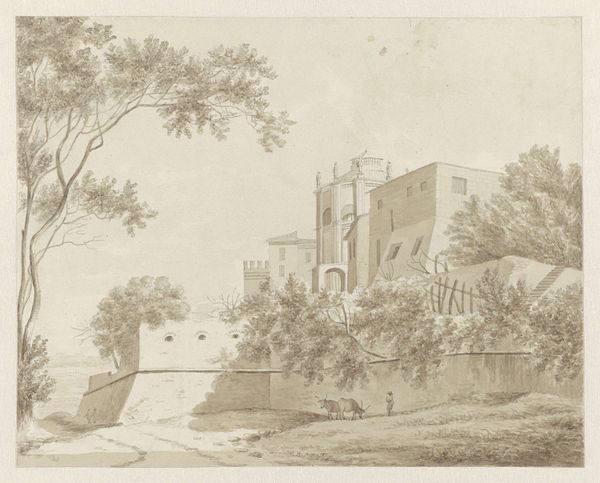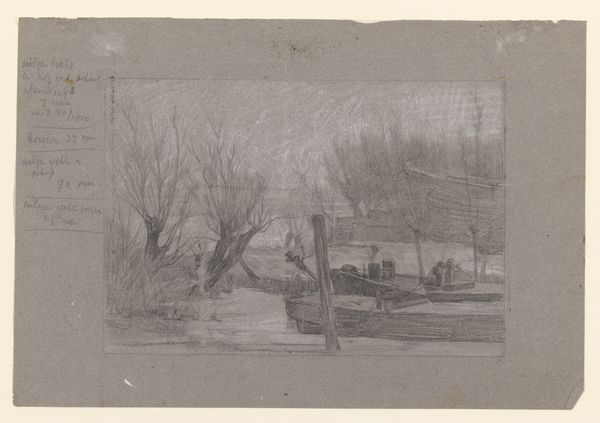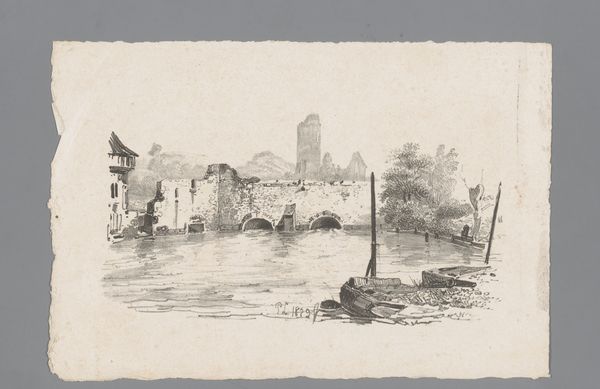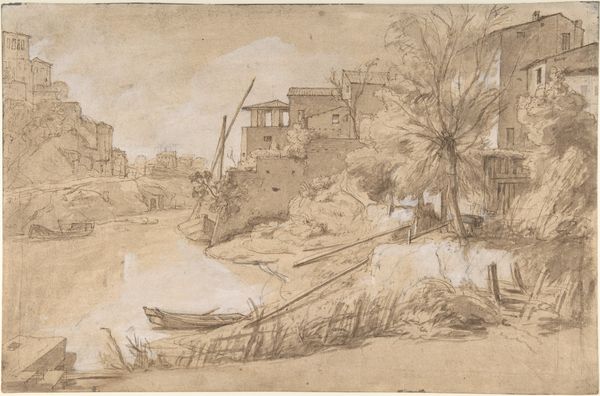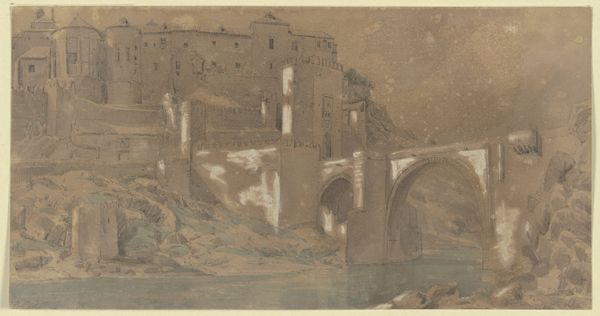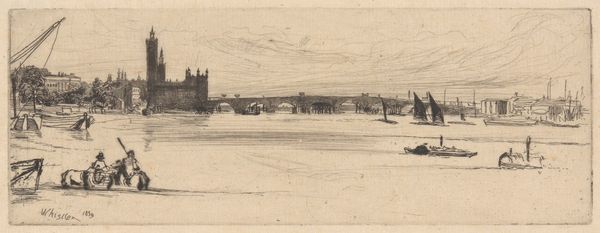
Copyright: Rijks Museum: Open Domain
Curator: This drawing, held here at the Rijksmuseum, is titled "Ruïne te San Francisco." It was created in 1915 by Willem Witsen. What do you make of it? Editor: At first glance, it feels… spectral. Almost ghostly. The lines are delicate, as if Witsen were trying to capture a fleeting memory rather than a solid structure. Is it supposed to be this damaged? Curator: Yes, absolutely. The drawing depicts a ruin, ostensibly in San Francisco. But it's not just the physical decay that Witsen seems to focus on. The medium—pencil on paper—adds to that sense of transience. Pencils allow for easy edits, but the effect here is one of uncertainty. Editor: I’m more drawn to the depiction of material degradation itself—the building showing its layers, its construction. Notice the lines; he hasn't smoothed anything over. You can practically trace the labour. But San Francisco… 1915… wasn't that around the time of the earthquake? Curator: Precisely. Though it happened in 1906, the rebuilding was ongoing, and the ruins would still have been prominent. This image serves as a poignant symbol of destruction and resilience, themes echoed across art history. It's also indicative of San Francisco's role in early twentieth-century America, emerging out of crisis. Editor: The deliberate rawness really strikes me. Witsen could've obscured those processes, refined the image, but he chose not to. Maybe there is more depth in showing a landscape's transformation due to production, deconstruction, or perhaps here, devastation. What do you make of that pond? Is it part of the drawing? Curator: Interesting question! Its still water reflecting a ghost city... It’s quite moving as a symbol. Water often represents the subconscious, the emotional realm. Perhaps Witsen suggests that collective trauma seeps into our very being. I'm going back to what you were saying about that pond, perhaps is supposed to signify the cycle, that San Francisco may emerge and change like water flowing, taking the shape it needs to, filling in what's now ruins to become a vibrant city. Editor: He's certainly done something powerful. Considering its materiality, I think the raw depiction and ghostly quality, rather than being seen as defects or unintended aspects, serve the memory and physical representation that Witsen attempted. Curator: An artist taking what could be a material failure and weaving into this fabric of loss, resilience and symbol? Yes, there is great power in it.
Comments
No comments
Be the first to comment and join the conversation on the ultimate creative platform.
